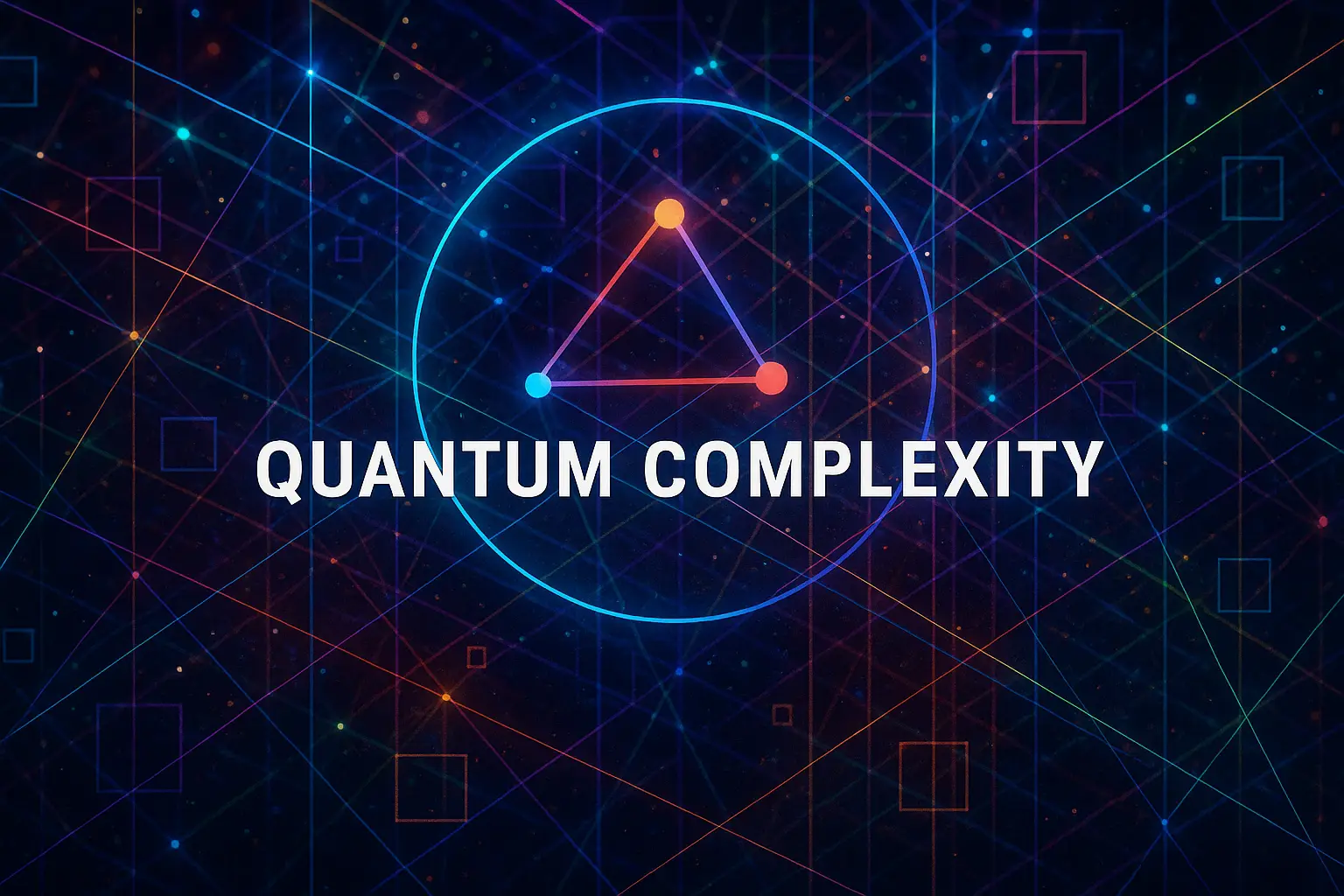Table of Contents
- Introduction
- The Landscape of Quantum Complexity Classes
- BQP and Its Boundaries
- Quantum Interactive Proofs and MIP*
- QMA, QIP, and QCMA: Quantum Proof Systems
- Oracle Separations and Relativized Worlds
- Quantum PCP Conjecture and Approximation Hardness
- Quantum Lower Bounds and Barriers
- Quantum Advice and Non-uniform Models
- Quantum Reductions and Cryptographic Assumptions
- Quantum Meta-Complexity
- Quantum Learning Theory and Sample Complexity
- Quantum Communication and Information Theory
- Noisy Intermediate-Scale Quantum (NISQ) Models
- Quantum Simulation Complexity
- Quantum Automata and Languages
- Quantum Algorithmic Randomness and Kolmogorov Complexity
- Post-Quantum Cryptography and Quantum Hardness
- Interdisciplinary Connections: Physics, Logic, and Computation
- Conclusion: The Road Ahead
1. Introduction
Quantum computation theory explores the power, limits, and structures of quantum algorithms and machines. As quantum devices scale, theory must evolve to answer foundational and applied questions in complexity, learning, and verification.
2. The Landscape of Quantum Complexity Classes
Quantum classes like BQP, QMA, QIP, and MIP* define distinct computation paradigms. Their relationships remain partially open, with many believed to exceed classical counterparts in expressiveness and proof power.
3. BQP and Its Boundaries
BQP (Bounded-Error Quantum Polynomial Time) includes problems solvable efficiently by quantum algorithms. Determining its boundaries relative to classes like NP, PH, or PSPACE is a core challenge.
4. Quantum Interactive Proofs and MIP*
MIP* = RE shows that entangled multi-prover systems can verify any recursively enumerable problem. This result reshapes our understanding of interaction, proof verification, and the role of entanglement in complexity theory.
5. QMA, QIP, and QCMA: Quantum Proof Systems
These classes explore single and multiple prover settings. Open questions include:
- Is QMA ⊂ QIP(2)?
- Does QMA equal QCMA?
- Can quantum proofs be verified non-destructively?
6. Oracle Separations and Relativized Worlds
Oracle constructions show that BQP may lie outside PH, or that QMA ≠ QCMA in relativized settings. These models suggest that new, non-relativizing techniques are needed to settle class separations.
7. Quantum PCP Conjecture and Approximation Hardness
The Quantum PCP conjecture posits that approximating ground states of local Hamiltonians remains QMA-hard. Its resolution would mirror the classical PCP theorem and redefine the scope of hardness of approximation.
8. Quantum Lower Bounds and Barriers
Quantum adversary methods and polynomial techniques provide lower bounds. However, proving circuit lower bounds for BQP or QMA remains a major open frontier.
9. Quantum Advice and Non-uniform Models
BQP/qpoly and related classes ask what power arises from non-uniform quantum states. Key issues include the verifiability and destructiveness of quantum advice.
10. Quantum Reductions and Cryptographic Assumptions
Quantum reductions underpin post-quantum security. Proving worst-case to average-case hardness for problems like LWE forms the basis of resilient cryptography in the quantum era.
11. Quantum Meta-Complexity
Quantum meta-complexity studies the complexity of reasoning about quantum computation itself: circuit minimization, descriptive complexity, and quantum Kolmogorov complexity.
12. Quantum Learning Theory and Sample Complexity
Quantum PAC learning, online learning, and variational learning raise questions about:
- Sample complexity
- Label access in quantum models
- Generalization bounds
13. Quantum Communication and Information Theory
Quantum communication complexity and entropy measures underpin bounds on information transmission, distributed computation, and interactive protocols in quantum systems.
14. Noisy Intermediate-Scale Quantum (NISQ) Models
Characterizing complexity in the presence of noise, short coherence time, and low qubit counts is central to NISQ theory. Hybrid quantum-classical models and variational algorithms are active areas of exploration.
15. Quantum Simulation Complexity
Understanding which Hamiltonians and dynamics can be simulated efficiently informs quantum chemistry, condensed matter, and high-energy physics. Classes like DQC1 and BQP-sim capture such problems.
16. Quantum Automata and Languages
Quantum finite automata and quantum formal languages explore low-resource models of computation. These help define the expressive power of bounded-space and restricted quantum machines.
17. Quantum Algorithmic Randomness and Kolmogorov Complexity
Quantum versions of algorithmic randomness and Kolmogorov complexity explore:
- Incompressibility of quantum states
- Randomness certification
- Quantum analogs of universal distributions
18. Post-Quantum Cryptography and Quantum Hardness
Hardness assumptions in quantum settings govern the design of cryptographic primitives. Lattice problems, isogenies, and hash-based constructions are explored both for their quantum resistance and theoretical implications.
19. Interdisciplinary Connections: Physics, Logic, and Computation
Quantum theory draws from and contributes to logic, category theory, information geometry, and condensed matter. These frontiers include:
- Categorical quantum mechanics
- Topological phases and computation
- Quantum logic
20. Conclusion: The Road Ahead
Quantum computation theory is expanding across complexity, learning, cryptography, and physics. Answering foundational open questions and integrating new interdisciplinary tools will shape the next era of quantum understanding.


